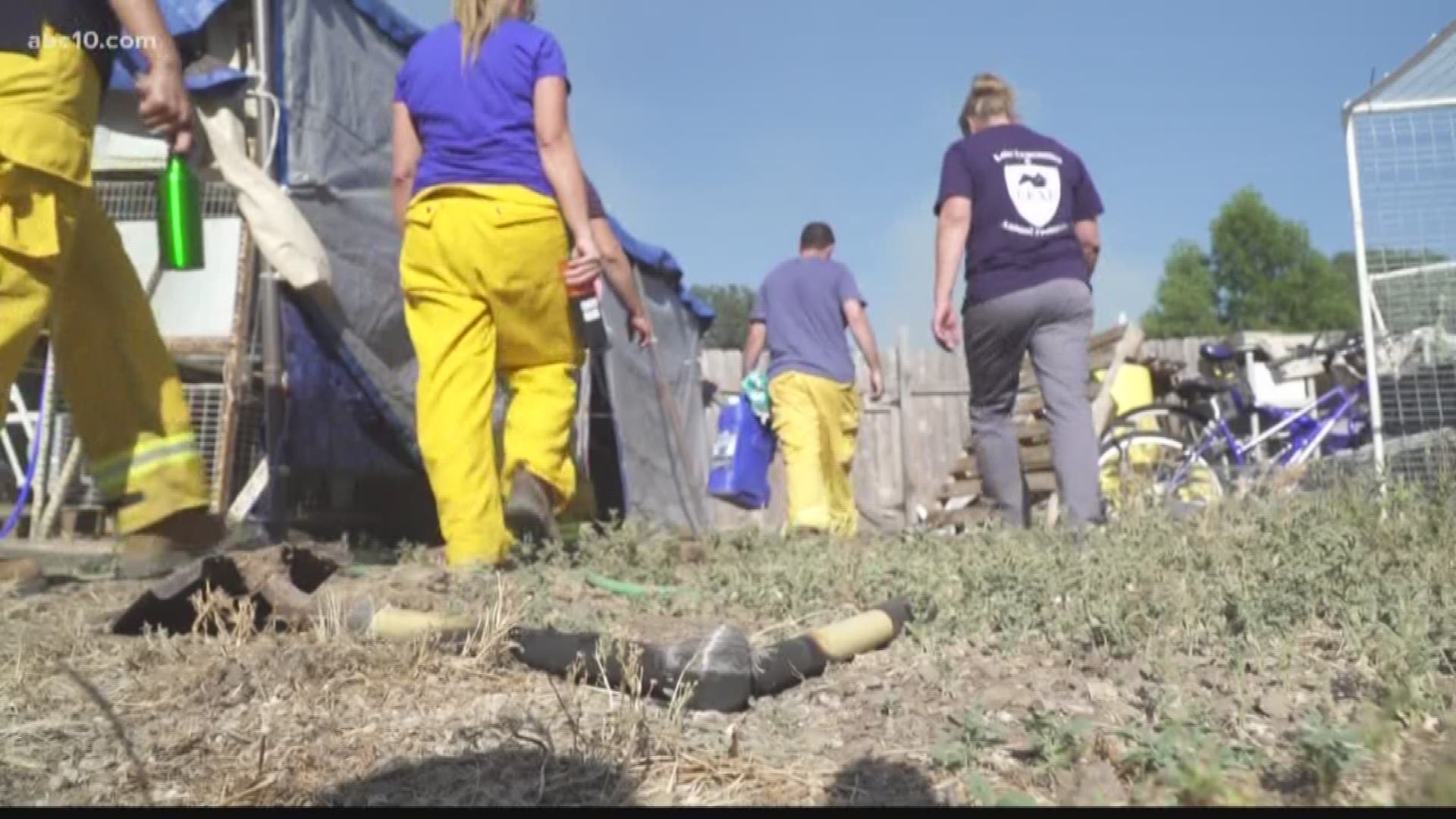As California settles into summer days, the busy fire months begin for California firefighters statewide.
According to the Cal Fire, in just the past week, 256 new fires were started and a total of 2,357 fires have been recorded for the year. We are looking at how certain communities are preparing for a major fire.
13 communities in Sacramento County were identified to have a level of risk to wildfire in the Sacramento County Local Hazard Mitigation Plan. Additional analysis shows that low precipitation, rising temperatures, and deteriorating forest health from drought, heat, and tree disease have led to an expected increase of wildfire risk in California.
Folsom’s risk factor
Folsom was identified in the Sacramento County Local Hazard Mitigation Plan as a community at-risk to wildfire. The data used in the study considers the likelihood of a given area to burn and potential fire behavior.
“Folsom’s wildfire threat ranges little-to-no threat to very high, and the majority is moderate,” said Folsom Fire Chief Felipe Rodriguez in an email. “Due to knowing that we have open space and areas with vegetation within our city, we have plans in place; partnerships with neighboring agencies; and well-trained personnel with the proper equipment to mitigate potential fires we may face.” He added that additional actions are taken through weed abatement.
The Local Hazard Mitigation Plan annex for Folsom detail a wildfire as a likely future occurrence, meaning a 10 and 100 percent chance of occurrence in the next year or a recurrence interval of 10 years or less.
The areas identified as potential wildfire risk areas include the American River/Lake Natoma corridor and areas of concern like Hinkle Creek, Willow Creek, Humbug Creek, and Blue Ravine Parkway beltways. According to the hazard mitigation plan, there is no history of a wildfire near Folsom; the closest was the King Fire in Pollock Pines.
Special attention was paid to the eastern areas, which contains the greatest chance for a large-scale fire to start and spread uncontrollably. The hazard mitigation plan addressed that the terrain near Sacramento/El Dorado Hills makes a fire difficult to contain before it grows and threatens structures. In addition, this area of Folsom has transmission towers and repeater antennas located on ridge tops that can be an ignition source and an exposure from a fire starting in low lands.
Folsom has 21 personnel on duty per day and four fire stations, with a fifth station adding three more personnel opening in September. Their regional response model also has hundreds of personnel available to respond to any incident and mutual aid agreements with other jurisdictions.
Due to having a regional Emergency Communications Center, Folsom can request resources like helicopters and dozers, regardless of fire department, that can assist with any emergency incident in the city.
The evacuation procedure from Sacramento County
Should a day ever come when Folsom must engage in an evacuation for a wildfire, the procedure begins with Sacramento County and their Emergency Operations Center. Accountability for emergency actions goes to Sacramento County, according to the Sacramento County Emergency Operations Plan, and communications coordination lies with the EOC.
A wildfire evacuation would indicate a medium threat level or high threat level depending on its severity. The largest threat level would see potentially more than 25,000 people needed to evacuate and the need for shelter, transportation, and resources to potential evacuate to different counties or states.
The County EOC determines the shelters to open, which are generally close to the evacuee’s homes but far enough away to be safe from the threat. Communication from Sacramento County regarding an emergency in the area is attainable by registering through www.sacramento-alert.org. The alerts sent out are considered to be critical and time sensitive.
According to Fire Chief Rodriguez, some of these evacuation centers include Folsom High School, Oak Hills Church, The Gathering Place Church, and the Sports Complex.
“I recommend that our residents always know at least two ways out of their neighborhood. In addition, they should always adhere to evacuation warnings and have a meeting place for their family in the event that cell phone towers are down,” said Fire Chief Rodriguez in an email.
What the California Office of Emergency Services offers in the event of local emergencies
According to Public Information Officer Bryan May for the California Office of Environmental Services, California has the most robust mutual aid program in the country, which communities can benefit from in times of an emergency.
“We at Cal OES coordinate that mutual aid across the entire state. It’s the 9-1-1 for local 9-1-1. In other words, every emergency starts local,” said May through e-mail.“ When the situation gets to the point where the local first responders know they need help, they call the State Warning Center, part of Cal OES, and we coordinate getting help from anywhere in the state to anywhere in the state. “
Staying informed
The Folsom Fire Chief also strongly recommends his community members to register their cell phone with Sacramento Alert and Folsom Nixle. Their department can also be followed on Facebook and Twitter. A copy of the “Ready, Set, Go” program developed by Cal Fire also details preparations for wildfires.
Community resources include public education programs, disaster preparedness information from Folsom Fire Department, the fire department’s open house in October, and events like National Night Out. Fire stations are also open for tours where people can get information and meet the department’s firefighters.

